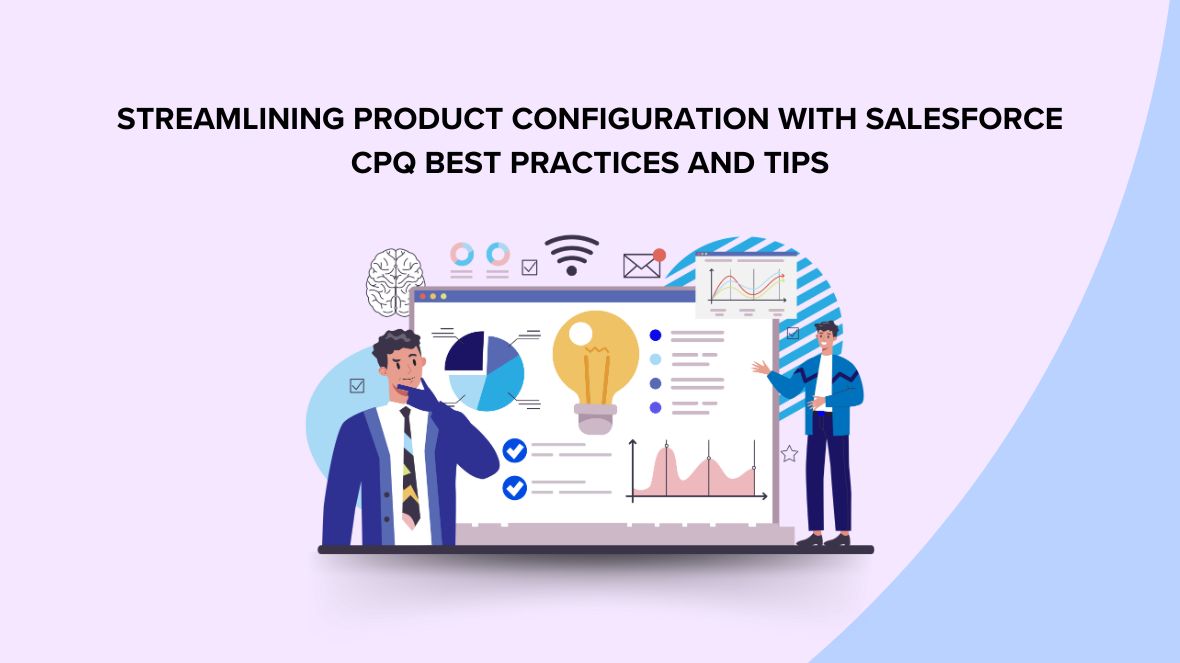Introduction
Salesforce CPQ (Configure, Price, Quote) is a powerful tool that enables sales teams to configure products, price them accurately, and generate professional quotes quickly. Streamlining the product configuration process is key to maximizing efficiency and ensuring that sales reps can focus on closing deals rather than getting bogged down in complex configurations. Here’s how you can streamline product configuration with Salesforce CPQ:
1. Leverage Product Bundling
- Simplify Complex Offerings: Use product bundling to group related products and services together. This reduces the number of individual products that sales reps need to select, speeding up the configuration process.
- Enforce Consistency: Bundles can include rules that automatically include or exclude certain options based on the customer’s needs, ensuring consistency in what’s offered.
2. Utilize Configuration Attributes
- Gather Inputs Efficiently: Use configuration attributes to gather necessary input from the sales rep in a structured way. These attributes can drive the selection of products and options without requiring the rep to manually choose from a long list.
- Dynamic Adjustments: Attributes can dynamically change available options based on earlier selections, ensuring that only relevant choices are presented.
3. Implement Guided Selling
- Step-by-Step Assistance: Guided selling provides a step-by-step process for sales reps, guiding them through the product selection based on customer needs. This helps even less experienced reps configure complex products accurately.
- Personalized Recommendations: Use guided selling to suggest products or configurations that match the customer’s specific requirements, increasing the chances of upselling and cross-selling.
4. Optimize Pricing Rules
- Automate Discounts and Markups: Configure pricing rules that automatically apply discounts, markups, or special pricing based on customer segments, product types, or deal size. This reduces manual errors and speeds up the pricing process.
- Real-Time Calculations: Ensure that pricing calculations happen in real-time as the configuration is being built. This allows the sales rep to see the impact of different options on the total price instantly.
5. Utilize Product Rules for Automated Configurations
- Enforce Business Logic: Product rules can automatically add, remove, or recommend products based on the selections made during configuration. This ensures that the final product setup meets business requirements and customer needs.
- Prevent Configuration Errors: Use validation rules within product rules to prevent invalid configurations, reducing the need for back-and-forth adjustments after the quote has been generated.
6. Enable Dynamic Option Constraints
- Filter Choices Dynamically: Dynamic option constraints limit the choices available to the user based on previous selections. This prevents the selection of incompatible options, simplifying the decision-making process.
- Improve User Experience: By showing only relevant options, dynamic constraints help streamline the configuration process and enhance the user experience.
7. Automate Document Generation
- Generate Quotes Automatically: Once the product configuration is complete, use Salesforce CPQ to automatically generate quote documents. This reduces the time spent on manual document creation and ensures consistency across all sales materials.
- Custom Templates: Utilize custom templates for different customer segments or product lines, making it easier to tailor quotes to specific needs without additional manual input.
8. Continuously Monitor and Refine
- Analyze Usage Data: Regularly review how sales reps are using the product configuration tools. Identify any bottlenecks or common errors, and adjust the configuration process or rules to address these issues.
- Feedback Loop: Create a feedback loop where sales reps can report issues or suggest improvements, allowing for continuous refinement of the configuration process.
Conclusion
By leveraging these best practices, organizations can significantly streamline the product configuration process in Salesforce CPQ. This not only increases the efficiency of the sales team but also enhances the accuracy and consistency of product offerings, leading to improved customer satisfaction and higher win rates. Implementing these strategies requires a thoughtful approach to CPQ customization, but the payoff in terms of time saved and deals closed is well worth the effort


